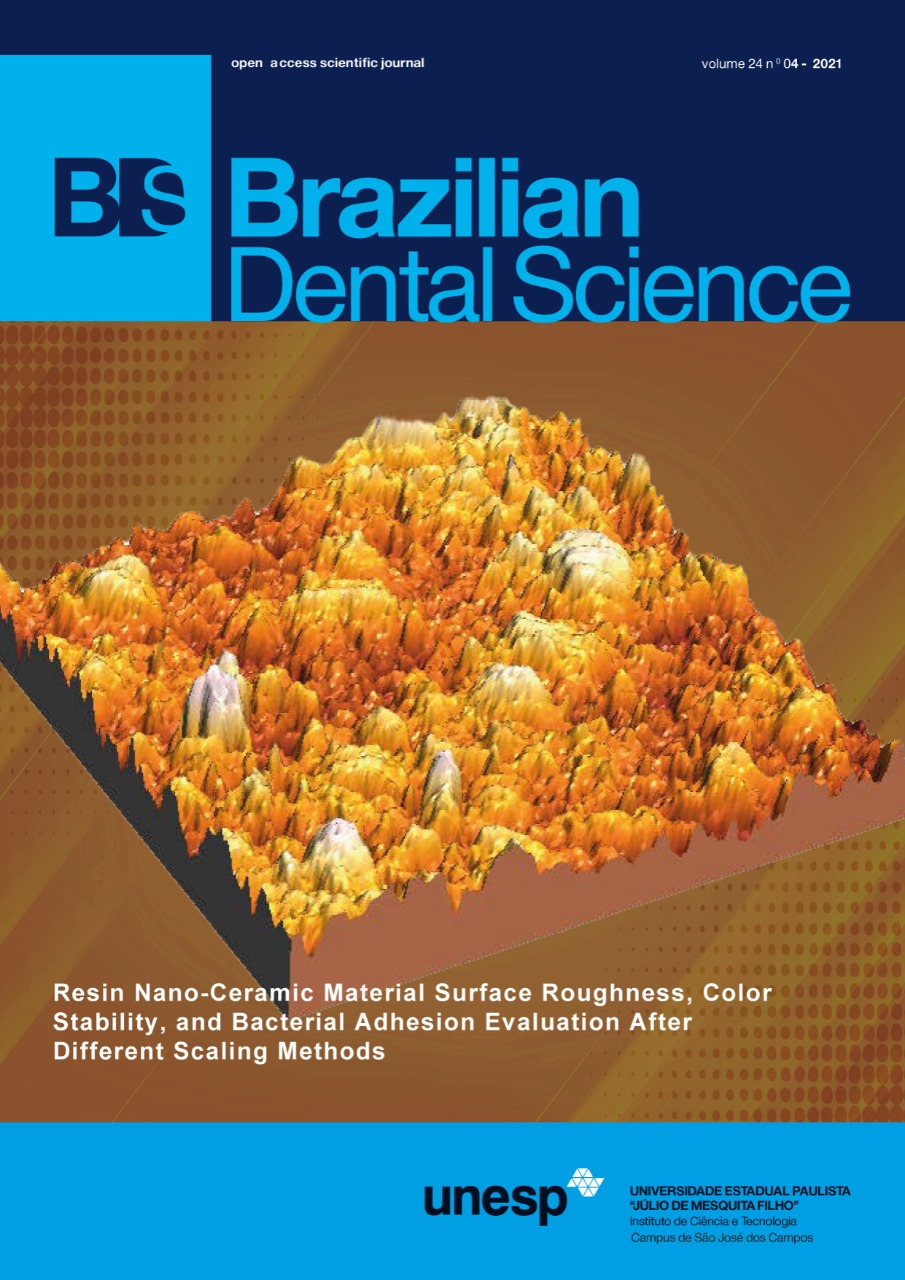Full digital workflow in fixed adhesive dental prosthesis: Description of a clinical technique
DOI:
https://doi.org/10.14295/bds.2021.v24i4.2722Abstract
Digital dentistry has gained space in several dental specialties. It is possible to achieve excellent results with the digital workflow, which combines the efficiency of the restorative material with a greater marginal adaptation. This study aimed to report a clinical case through the digital workflow, with a faster and clinically acceptable prosthetic resolution. In this clinical case report, digital workflow allowed a faster and clinically acceptable prosthetic resolution. A 45-year-old female patient reported cementation failure of the prosthetic crown on tooth 14. As it was a vital tooth, the tooth received a total crown preparation. In the same clinical session, the patient's mouth was scanned then a capture software obtained a virtual model. After, the design software planned a digital "diagnostic wax-up", so a leucitic ceramic was chosen for the rehabilitation. The ceramic block was milled and receive stain and glaze, dispensing the prosthesis laboratory. Then, the adhesive cementation was performed with a dual-polymerized resin cement. The final crown had ideal adaptation, with no need for interproximal and occlusal adjustments, with an excellent marginal fit. Within the limitations of this study, this case report showed that the digital workflow allowed a favorable result in a shorter working time, which brought back function and aesthetics, without the need for interproximal and occlusal adjustments.
Keywords
Prosthodontics; Cosmetic dentistry; CAD-CAM.
Downloads
Downloads
Published
How to Cite
Issue
Section
License
Brazilian Dental Science uses the Creative Commons (CC-BY 4.0) license, thus preserving the integrity of articles in an open access environment. The journal allows the author to retain publishing rights without restrictions.
=================




























